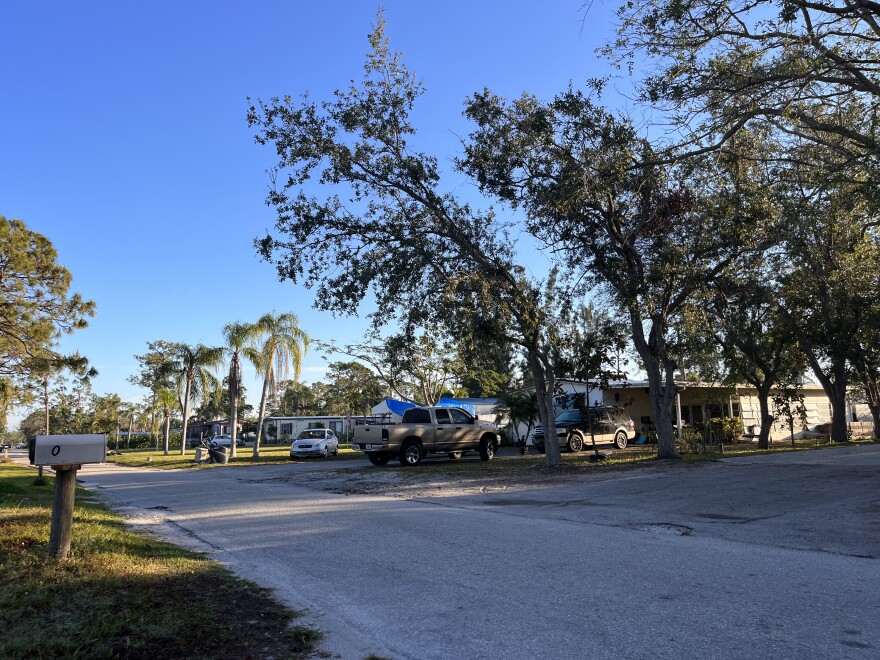In a plan to reduce pollution entering the Estero River, the Village of Estero is looking at design features for a new sewer system.
The project’s latest development is focusing on the West Broadway community near the Estero River. It is part of a larger project aiming to transition 12 Estero neighborhoods away from septic tanks and water wells. The homes would be connected to sewer and water lines. Two mobile home communities are included in the project.
“There's a complete range of problems with [well and septic] systems, many of which are located right along the river and are known to be polluting the river,” Village Manager Steve Sarkozy said. “We've taken the approach that we're going to do the design work to convert all of the systems in the Village to potable water, water systems, and municipal sewer systems.”
Some village residents are relieved to know that officials are taking steps to address the harmful pollutants entering their waterways. But some also are concerned about the cost of making the conversions away from septic and wells.
Greg Beach of West Broadway is one of the residents who will connect to the Lee County Utility collections system. He said it would be a big expense for a homeowner.
“I think it's kind of a government interference to require people to have to replace their septic systems and to require us to subscribe to the water system when it seems like a lot of us can't really afford that,” Beach said.
The cost per home is unknown at this time because the village is in the design phase. But Sarkozy said the village would look for state and federal grants to offset the costs for residents.
An estimate provided by a consultant stood at $70 million to complete the entire project, including installing potable water. The estimate did not include the cost for homeowners to connect their homes to the system and other related fees, according to the civic group Engage Estero.
“The project costs would be borne by the residents less any amount that we can get in state or federal grants and any amount that we might gain from other sources,” Sarkozy said. “The balance then is a portion to the residents, probably on a 20-year bond, so they would pay like a mortgage to pay off these expenses.”
Beach relies on a well system and claims that he has never had a problem.
“There are all kinds of sewage and ugliness that falls into that river, but they want to blame people who have lived here for a lot of years and say, ‘Okay, it's your system, now replace it',” Beach said.

Estero currently has more than 700 septic systems, and while some were constructed after updated regulations in 1980, most are older and have begun to fail, according to Engage Estero.
Studies from Florida Gulf Coast University have documented fecal indicator bacteria in the Estero River stemming from the aging septic systems in neighborhoods near the river. After Hurricane Ian, moving away from septic is a high village priority for the West Broadway neighborhood, according to Sarkozy.
Karen Tohen of Estero River Heights is still rebuilding after her neighborhood was flooded.
“I'm very much concerned about the cost of this project,” Tohen said. “I understand that some of our septic fields are leaching into the river, but the cost that they're proposing is outrageous. We're just trying to rebuild our lives, and then to start this practice, at this time, is very scary. Are we going to be forced to move out? I have nowhere to go.”
Tohen said she gets her septic system flushed out every three years without exception and does not use fertilizers that would enter the system and nearby waterways.
“I'm not looking forward to the cost of paying for my water,” Tohen said. “But I'm certainly not looking forward to the cost of living so that I can no longer afford to live here.”
After finishing the designs, the next step for the village would be to reduce costs for homeowners. Sarkozy said that the Village would begin to break down the cost per home.
“The high-priority areas are mobile home parks, so the property owner will be responsible for constructing lines to the homes and a collection system to the public rights of way,” Lee County government Communications Specialist Timothy Engstrom said.
After connecting to the utility collections system, the county will convey the sewage to the Three Oaks Water Reclamation Facility.
This story was produced by Democracy Watch in the FGCU Journalism Program. Riley Hazel can be reached at rjhazel4249@eagle.fgcu.edu.







